Pruning zucchini puts me in mind of the catchy seven beats that tap out “Shave and a haircut…” and then the response, “Two bits!”
The knocking pattern for gags originated in vaudeville, but younger folks may know it from Bugs Bunny cartoons or the movie “Who Framed Roger Rabbit?”

We link to vendors to help you find relevant products. If you buy from one of our links, we may earn a commission.
Cutting back an overgrown or sickly zucchini plant takes about as long as those seven notes, and costs even less than “two bits,” which is 25 cents.
Trimming a few leaves or stalks can provide benefits from increased air circulation to more fruits and healthier plants, but only when you prune zucchini at the best time and using the proper technique.
In this guide, I’ll share how to tell if you need to trim your zucchini, and how to complete the chore if it’s necessary. Here’s the lineup:
What You’ll Learn
Reasons You May Need to Prune
For some homegrown fruits and vegetables, like tomatoes and kiwi, pruning is an absolute necessity if you want to enjoy the best yield and the healthiest plants.
With zucchini, though, pruning is typically optional.
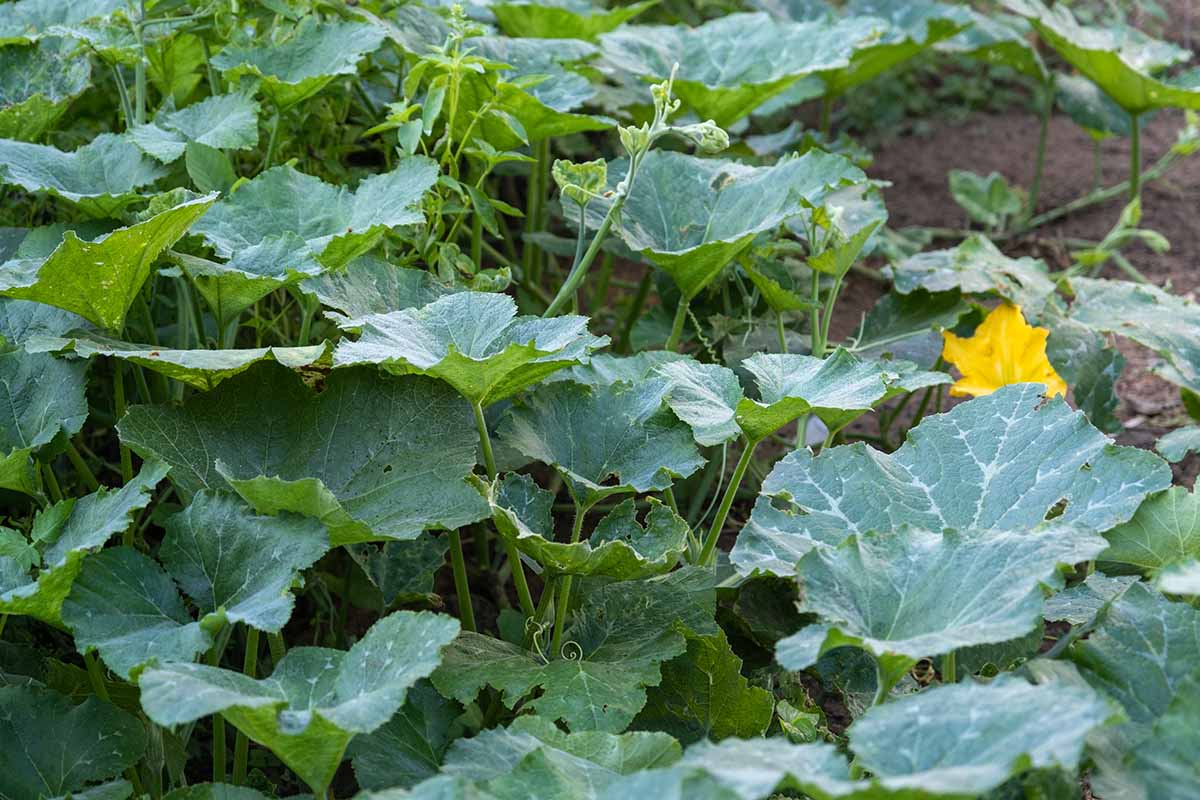
The vining varieties can benefit most from a trim of a few leaves, but only if they’re taking up too much space or starting to shade neighboring plants that require full sun.
Most zucchini you’ll commonly see sold as bedding plants or in seed catalogs are bush varieties, not vining.
A few that do trail include ‘Raven,’ ‘Grey Griller,’ and ‘Zucchetta Rampicante-Tromboncino,’ which can all grow to about five feet long or tall.
These types may need trimming to contain their sprawl, but you’ll lose some of the fruits if you do cut them back, so there’s a tradeoff.
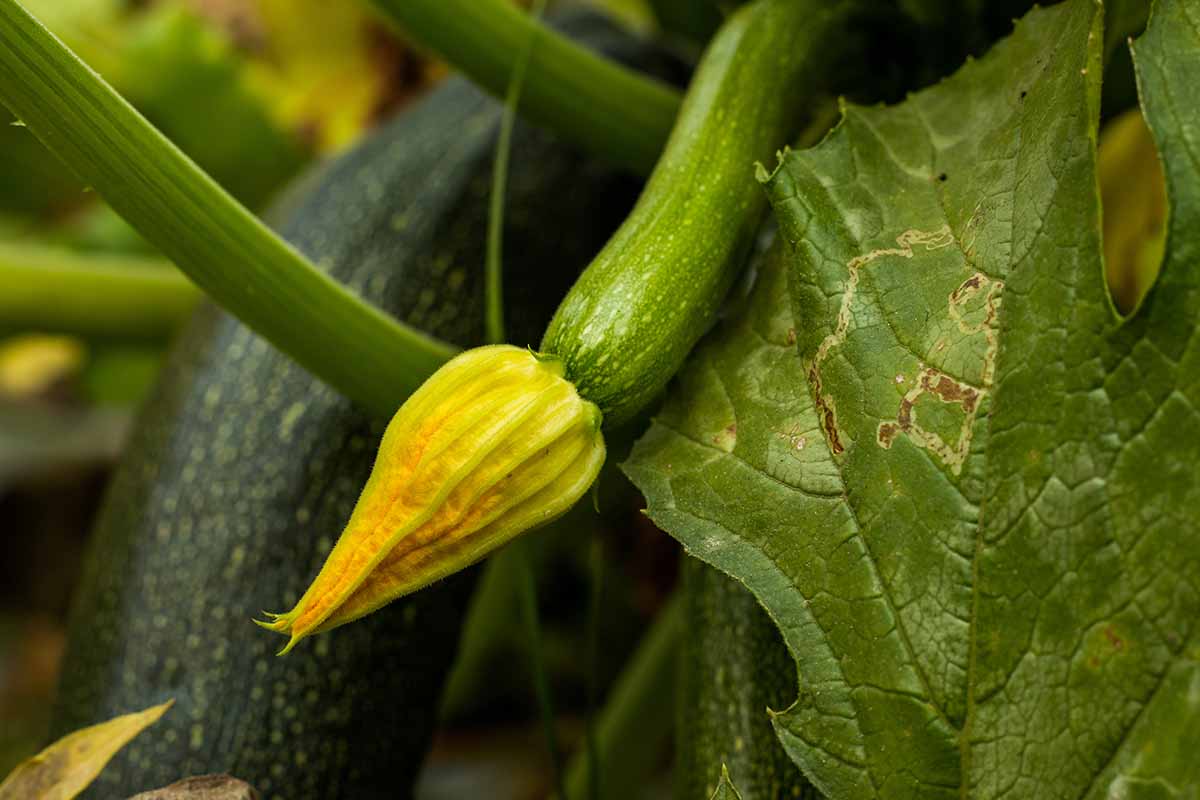
There are different reasons to prune bush varieties of zucchini:
They tend to be smaller than the vining varieties, but may require pruning to remove diseased stalks or leaves.
If they’re growing too close together, there’s also a chance you’ll need to trim them a bit so they don’t succumb to plant diseases promoted by poor air circulation or wet leaves.
Also, you may want to clip some of the foliage if they’re getting so big they’re beginning to shade neighboring plants that need full sun to thrive.
Avoid the Need to Trim
Before I launch into how to prune these summer squash vines or bushes, let’s consider ways to avoid the chore altogether.
If you are intent on growing this easy-care garden vegetable with minimal effort, a few preventive measures can help you to avoid having to make cuts later in the season.
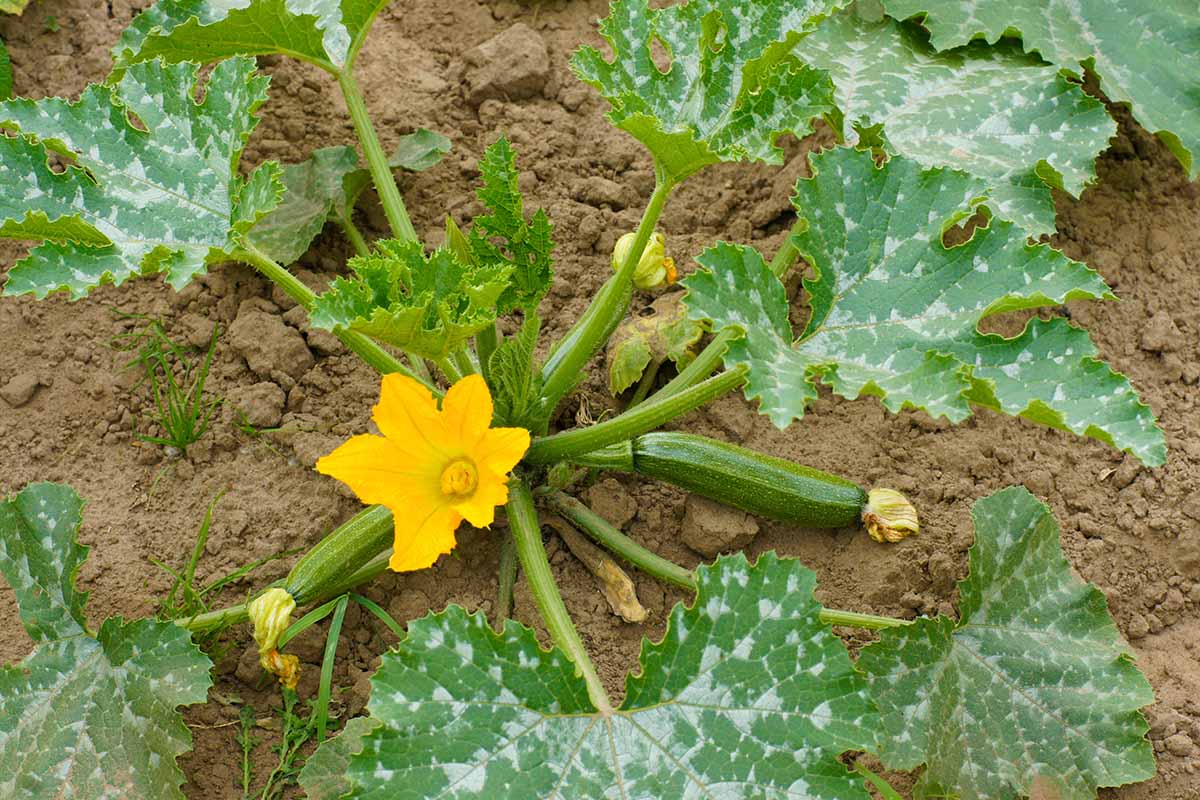
First, be sure to select a bush variety, preferably one marketed for container gardening or described as being compact. Avoid varieties described as vining.
‘Golden’ is one example. This variety grows just two feet tall max, and starts yielding six- to eight-inch fruits 60 to 90 days from sowing.
Seeds for ‘Golden’ are available from Eden Brothers in packets and in bulk.
Also, be sure to give the bushes ample space to grow. Check your seed packet for final spacing recommendations, but count on needing at least two feet between plants and maybe as much as four feet.
Summer squash that doesn’t have enough room for the leaves to dry out after rain can easily develop powdery mildew or a host of other zucchini diseases.
If you space them properly in the first place, you’re less likely to need to cut dead or damaged leaves from the plants or to have to trim here and there to give the plants better air circulation or access to ample sunlight.
And if you’ve felt like you needed to cut back leaves later in the season so you could more readily spot the fruits to pick in the past, prevent that outcome by choosing a variety promoted as “easy to pick.”
The French variety ‘Elite,’ for example, has a bushy, upright habit with smaller leaves.
Another option is ‘Golden Zebra,’ a hybrid with fruits that are easier to spot than the typical dark green types.
Seeds are available via Burpee.
When and How to Trim Zucchini Vines
If you do grow trailing types, clip any dead or damaged leaves when you spot them.
Use the same method you would for other foliage, cutting at the top of the stems just below the leaves, using clean clippers or scissors and disposing of the debris pronto.
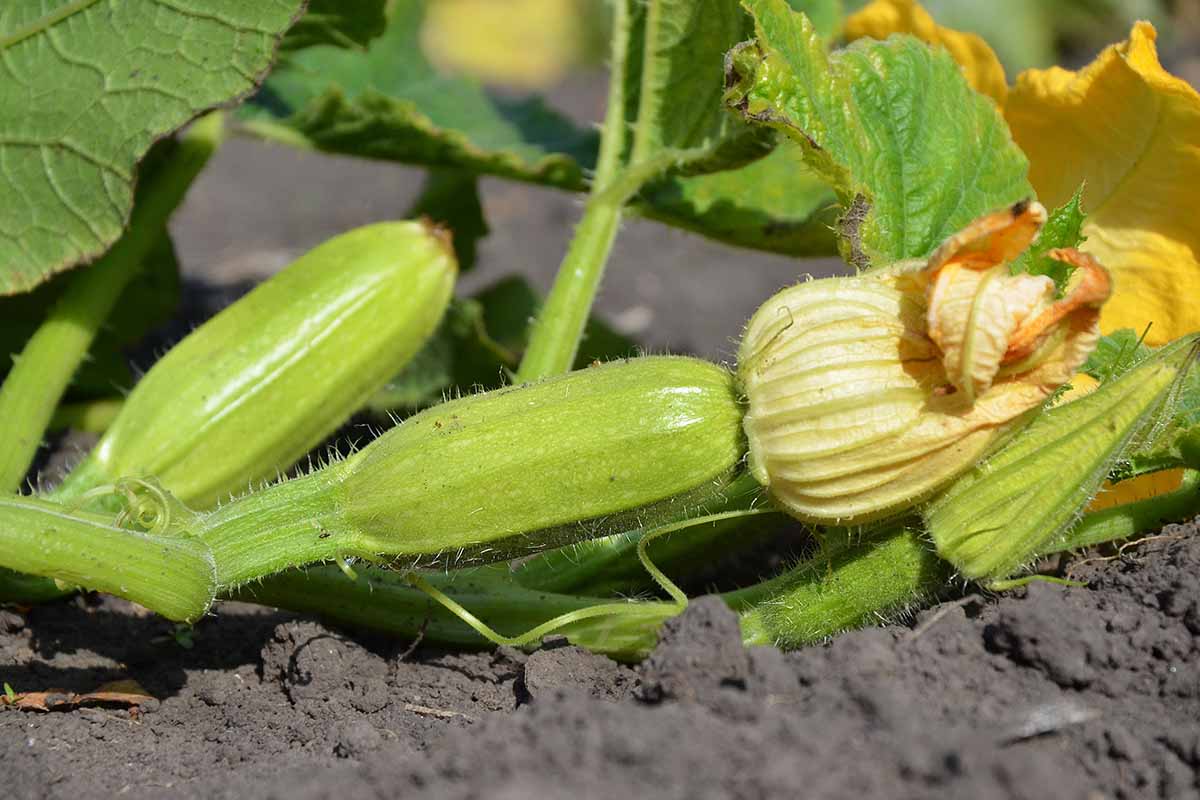
If a stalk supporting a sickly or infested leaf is also yellow, cut it away, leaving an inch remaining at the base of the plant.
Also, prune the vines if you notice they’re beginning to spread farther than you’d like.
You can prune vining zucchini varieties the same way you would a climbing or trailing winter squash.
Trim off the side shoots, not the main stem, using clean scissors. Keep in mind that these branches produce the squash you’ll harvest to eat, so each cut means fewer fruits.
Also, be sure to leave behind enough foliage to shade the developing squash.
You may want to invest in a manual hand pruner to use for this task, like the Felco F-2 pruners, a favorite among gardeners.
If you have other vegetable vines and perennial flowers that will need pruning, these are excellent to have on hand. But clean scissors are ample for this occasional summer gardening chore.
How to Prune Bush Varieties
It’s always a good idea to nick off any broken stems, or dead or damaged leaves, from bushy zucchini plants, the same way you would for vining varieties.
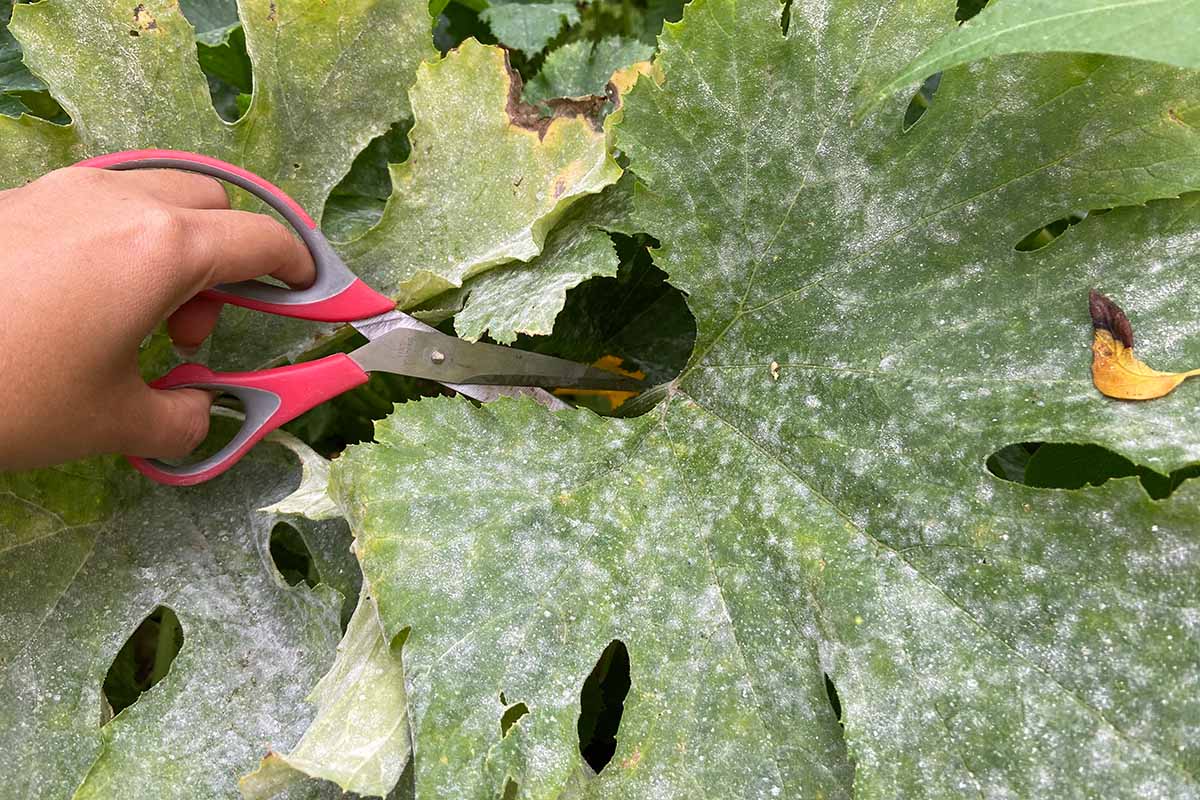
Resist the temptation to pull diseased or infested leaves off with your hands – it’s way too easy to pull the main stem up at the same time.
Instead, use scissors or clippers to snip the leaves off the tips of the stalks. If the stems are also damaged, cut them to within an inch of the plant base.
If you’re cutting to give neighboring zucchini or other vegetable companion plants more space or sunlight, don’t go overboard. Only remove a few outer leaves at a time.

Like all varieties of summer squash, zucchini need the shade from the leaves to produce firm, healthy fruits, and the foliage also photosynthesizes to keep the plants fed.
If the vegetation you clip off is diseased or infested, make sure to toss it in the trash, preferably sealed in a repurposed grocery bag. Don’t add damaged foliage to the compost or you may create a breeding ground for harmful insects or pathogens.
When you’re trimming off healthy plant tissue, though, that makes a fine addition to the “green” matter for your compost heap. Learn more about balancing compost components here.
The Cuts That Curb Zucchini’s Enthusiasm
I’ve always admired the way zucchini plants enthusiastically produce bumper crops without much interference or TLC from the gardener.

This is true of pruning, too. The extra step of clipping off yellowing or bug-bitten leaves is necessary but quick and easy.
And trimming a few leaves from bush plants to promote better air circulation, or clipping vines so they don’t take over the whole garden, are usually discretionary chores – though your neighbors may disagree if you’re out of town for a long period of the summer.
If you opt to thin out the plants that are growing into each other, you’ll be able to discourage pests and pathogens and encourage more vigorous fruiting, but your plants may produce plenty even without this extra step.
Do you have experience with cutting back zucchini? If you’d like to share pruning tips or ask questions not covered here, we welcome your input in the comments section below.
And if this info was valuable for you, read these zucchini growing and care guides next:

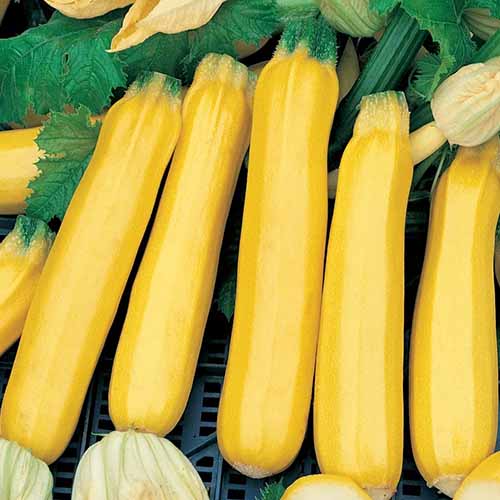
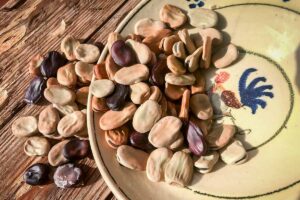


Hi Rose, I’ve been trying to find info to why my zucchini plant now only has leaves and no more flowers or fruit. Your info has helped me understand its due to my over pruning. Unfortunately , before reading this post today I pruned back my other zucchini plants too. I’m new to container planting and tend to prune everything too much due to lack of space . I enjoyed your clear and sensible info
Thank you so much
Thanks for reading, and thanks for the kind words, Alba!
I hope you can get a resurge on the blooms and fruits. You don’t say where you live, but sometimes production can fall off when the temperatures get too hot.
And with container zucchini, it’s especially important to mulch and to water about an inch a couple of times a week.
Good luck! Check in to let us know how it goes should you get the chance.